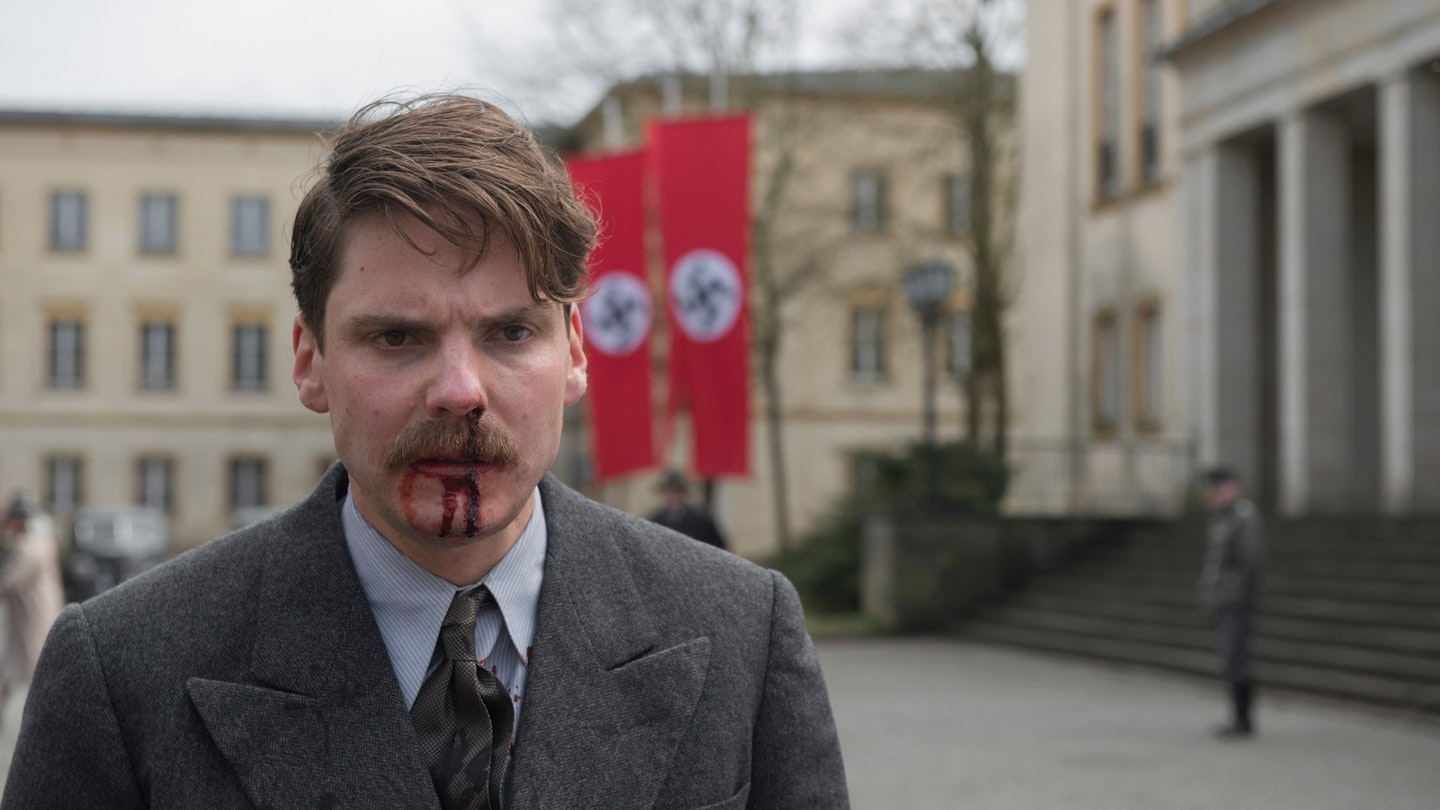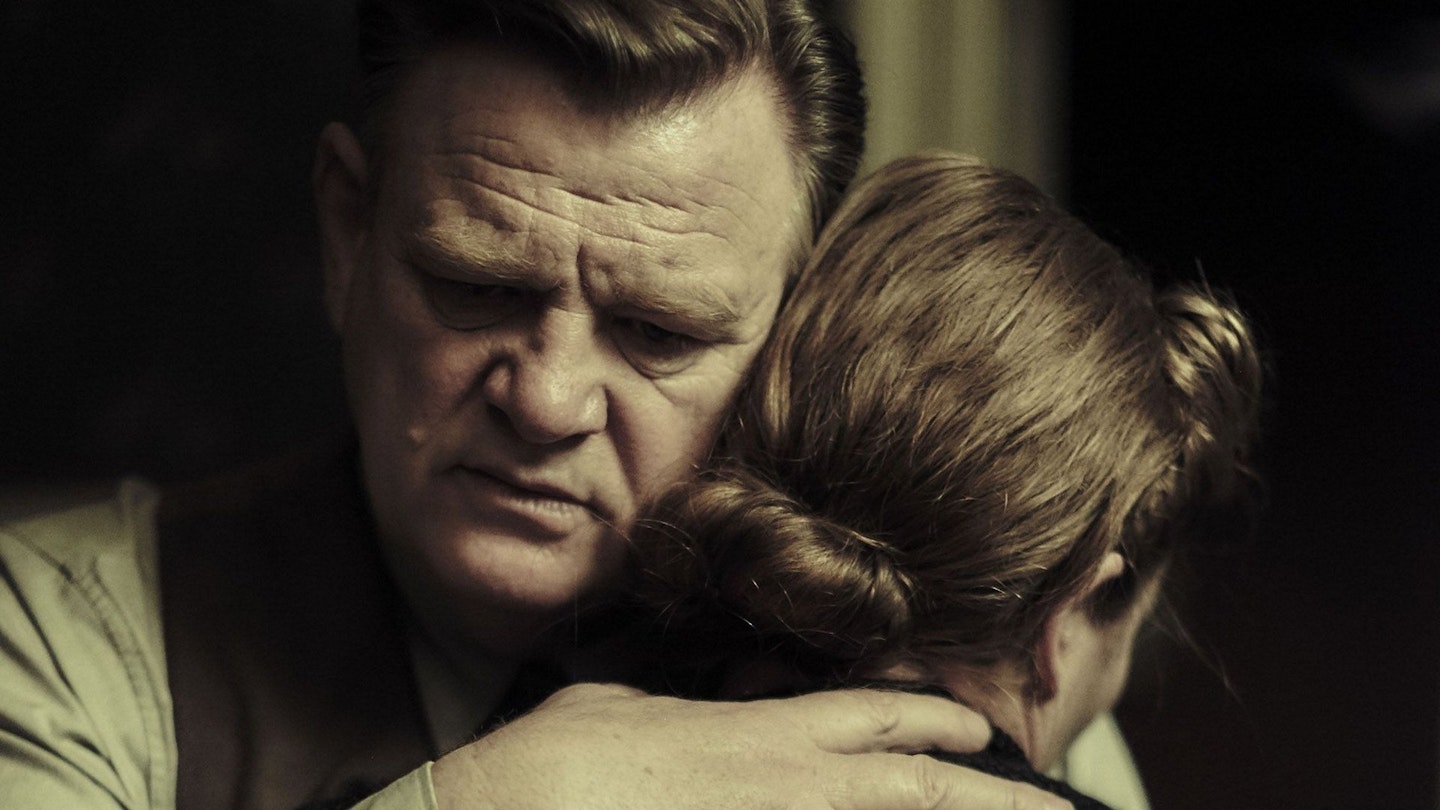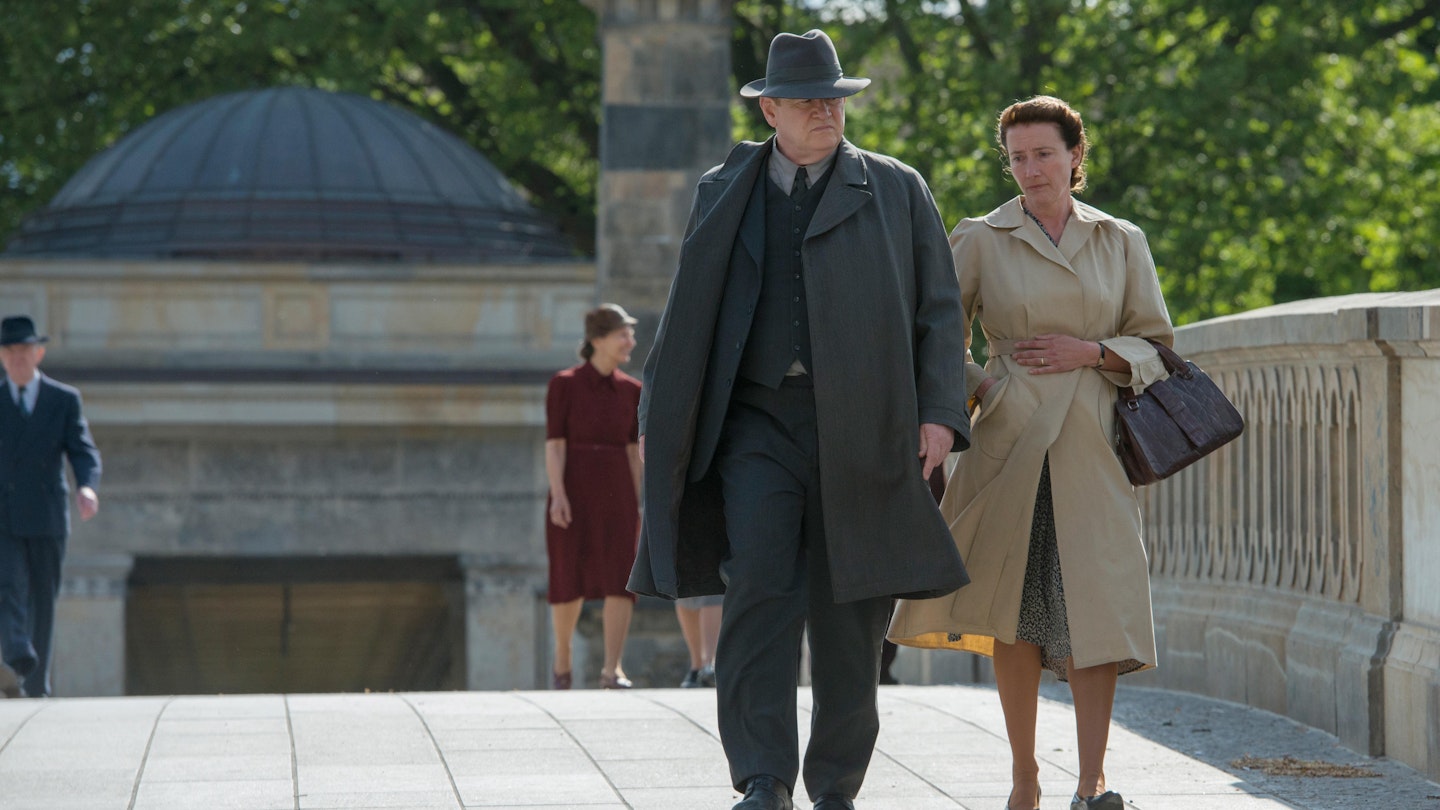The sight of a Nazi soldier, even a make-believe one, is enough to give Empire chills. Here in an abandoned furniture factory just outside Cologne, Germany, that’s been transformed into a working mill by renovating much of the existing equipment, actor-turned-director Vincent Perez is shooting a pivotal early scene in his adaptation of Hans Fallada’s acclaimed Second World War novel Alone In Berlin. Factory foreman Otto Quangel (Brendan Gleeson) is being questioned about his loyalty to the Führer by brown-shirted Nazi sympathisers, just days after the character’s only son was killed in action. Otto’s sober reply is: “What more can a man donate than his child?”
When I read the book everything changed.
Written just after the end of World War II and originally published in Germany in 1947, Fallada’s remarkable tome — known variously as Every Man Dies Alone and Alone In Berlin — was one of the very first anti-Nazi novels. Based on actual Gestapo files, it told of Otto and Lisa Hempel — here renamed Otto and Anna Quangel — an ordinary working-class Berlin couple who wage a two-person propaganda war against the ruling Nazi Party by writing inflammatory postcards, urging their fellow Germans to resist Hitler’s regime then leaving them in public places, a protest that earns them the attentions of, first, the police and, latterly, the SS.

For the Swiss-born Perez, whose family on his mother’s side are German, reading Fallada’s book was nothing less than a revelation, both personally and artistically. This was back in 2006 when he was undergoing something of a creative crisis. Having made his name as an actor in Cyrano de Bergerac and La Reine Margot, before going to Hollywood with Queen of The Damned, Perez had directed two French features and several shorts, but had decided to quit directing. “I thought I had no stories to tell. But when I read the book everything changed. It felt this was something I had to live with for a while.”
What Perez hadn’t expected was that it was going to take quite so long to bring it to the screen. While the book had been previously adapted for West German television, the process of securing the film rights to the novel dragged on and on, by which time he had already begun working on an adaptation of the script. “I became worried after so many months of work,” he reflects. “I felt my life was connected to that book.”
Back then, Perez was adamant he wanted to make the film in German. Then, in 2009, the book was translated into English for the first time, becoming a huge literary sensation in both Britain and America, and at the urging of his German producer, Stefan Arndt (The White Ribbon), Perez had a change of heart. “Suddenly we felt it was logical to do it in English, because it was opening the project to everyone. It’s important to show everyone can fight. It demands courage — it doesn’t demand you do huge things with machine guns. You can fight by thought.”

Emma Thompson was Perez’s first choice to play the timid Anna. Fortunately, the Oscar-winning actress had already read the book and signed on immediately. “I consider myself to have been slightly brainwashed as a young person because I was brought up on all those World War II movies and I had all sorts of assumptions about the war, about [Germany],” says Thompson, who remembers reading many firsthand accounts of the rise of the Nazis while making The Remains Of The Day. “I got the script, I met Vincent, and I was convinced by his passion for it. I thought it’s one of those times where this guy really, really, really wants to make this film.”
As Otto, Perez originally cast Mark Rylance. But when the start date got pushed back, Rylance had bow out due to theatrical commitments, to be replaced by Gleeson. “We always dreamt about a surprising couple and when you see them together it’s quite something,” says Perez.
“These are two people who reacted against the Nazis,” says Gleeson who came to Germany as a young man, busking, and even worked in a factory for three months. “The ordinariness of them is what’s paramount. They’re totally ordinary people. It’s incredibly inspiring.”

The production has already shot six out of its eight weeks in Berlin, Gorlitz and Cologne when Empire visits. Making a WWII film in Germany requires abiding by Federal law which states it’s forbidden to display the Swastika in public. When not seen on camera — between takes or at lunchtime — all Swastikas — be they on buildings, signs, or, even, an extra’s uniform — have to be covered up. “So people aren’t accosted with this thing,” says Gleeson.
Given the emotional subject matter, both cast and crew have found filming to be intensely moving. Perez, say his actors, can frequently be found behind the camera in floods of tears. “If you’re weeping all the time you’d worry the eyes are maybe getting a little soft focused. But he’s been very clear. He’s very tough,” insists Geeson.
For Perez, however, tears are a more than an acceptable price to pay to, after more than a decade, finally be able to bring such a vital, still relevant, piece of history to the big screen.
*Alone In Berlin arrives in cinemas on 30 June. There will be a special screening event at the Imperial War Museum on Monday 26th June, simulcast into select screens across the UK. For more information about participating cinemas and how to get tickets, please visit [aloneinberlinfilm.com/](http://aloneinberlinfilm.com/
).*
